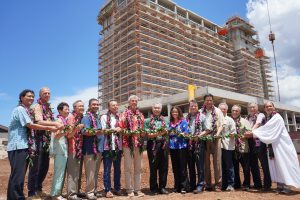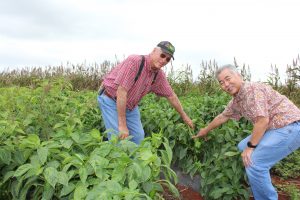Staying focused on affordable housing, local ag
Posted on Sep 12, 2019 in Capitol Connection, FeaturedWhen we’re knee-deep in day-to-day issues, it’s hard to think about the future. Yet that’s the challenge for state departments and the governor as they balance needs to move forward on long-term goals. This edition provides updates in two key areas — affordable housing, including Hawaiian Home Lands projects, and local food production — to prepare for the years ahead.
Q. Should we be concerned about balancing land for affordable housing and local agriculture production?
A. I don’t really see a conflict between more affordable housing and agriculture since we have enough acreage from former plantation lands to do both. What we’re hoping for in this agriculture renaissance is changing from exporting products to focusing on what we can grow here to consume. It means looking at what we can grow in the islands and how to use a combination of traditional farming, new technology for higher yields, and public-private partnerships for larger capital investments.
Q. What do you want people to know about diversified ag progress in Central O‘ahu?
A. I was very encouraged and inspired by the productivity and dedication of farmers like Larry Jefts, Shin Ho and Fred Lau, owner of Mari’s Garden. They’re smart, entrepreneurial, and carrying on a proud family farming tradition. It’s great to see multi-generational farms being perpetuated, even with all the challenges. Now with programs such as ‘Aina Pono in the public schools and a new farm-to-state initiative, I see a lot of opportunities for farmers to provide healthy options for our community. The state needs to lead by example and look for ways we can support local farmers.
Q. Are you encouraged by housing projects such as Kulana Hale in Kapolei and several Department of Hawaiian Home Lands projects in the pipeline?
A. Yes, we’re seeing definite progress for affordable units in all demographics. Kulana Hale is one example of a public-private partnership that will help working families and seniors. DHHL now has the highest operating budget it’s ever had, which means we’re increasing staff to deliver more timely projects. The capital improvement dollars are significantly higher than in the past, and we’ve revised policies so we can provide more infrastructure support for department projects. DHHL has recently completed new administrative rules to allow rentals on Hawaiian Home Lands. These rules will be implemented in the department’s first high-rise project at 820 Isenberg Street, giving beneficiaries an affordable housing option in urban Honolulu.
Q. When we talk about “sustainability” for the state, what do you hope future Hawai‘i residents will see?
A. We’ve begun this transformation toward sustainability for Hawai‘i in the broadest sense. We need to stop sending our dollars out of state and creating jobs somewhere else. We need to invest in our community. Sustainability ripples through the entire economy. It’s agriculture, it’s the environment, it’s energy, it’s jobs in all sectors. In 2019, we may think the goals we’ve set aren’t achievable, but we’ve shown we can make progress. The hope is that, if we’re strategic and focused and work together as a community to tackle them, we can reach our goals.

